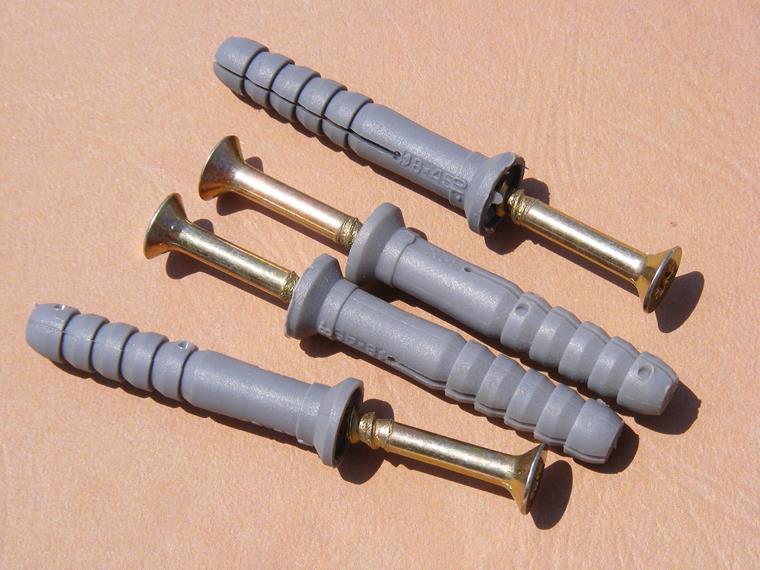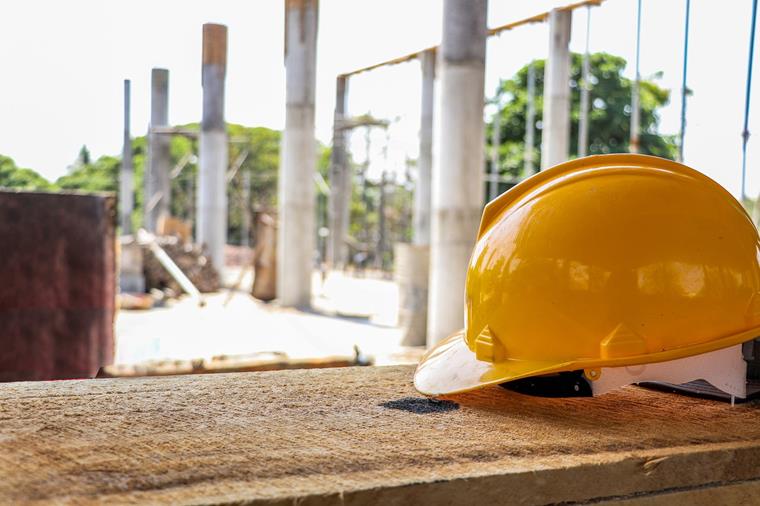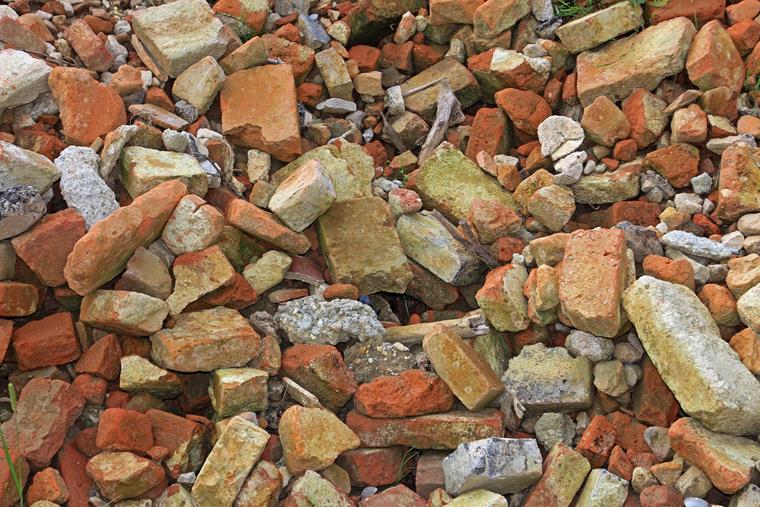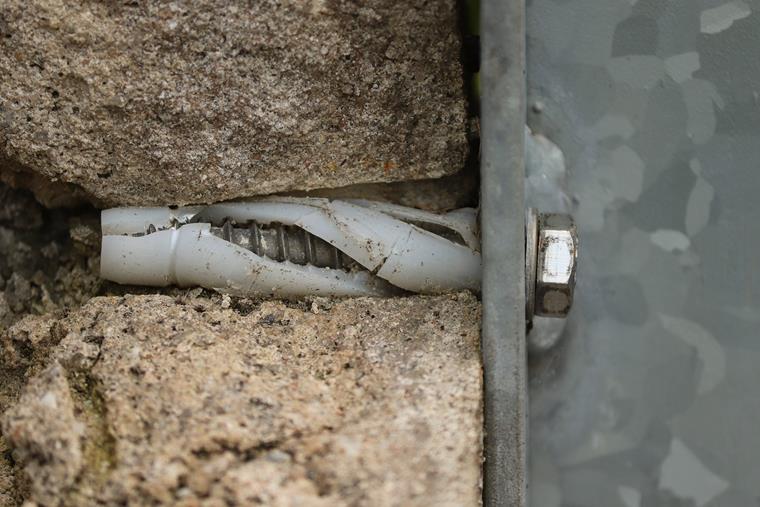Today, we focus on small yet significant details! Dowels in Fastening Technology. We get up in the morning and go to the bathroom, often without giving it a second thought. But this is where it starts. The large picture with its solid wooden frame in the hallway, the wide mirrored cabinet, and even the sink – all remain securely in place thanks to dowels. After fastening them, dowels disappear under the furniture and we forget that they are even there. Yet they do more than we think!
To take a closer look at the role of our little everyday heroes, we interviewed a very special guest. Eckehard Scheller is "the dowel man", as he introduces himself – a real expert in his field. Of course, he doesn't just deal with our small household dowels, but also with those on which loads of hundreds of kilograms or even several tons can hang. Eckehard is trained as a carpenter, but studied civil engineering after his apprenticeship. His first contact with large dowels and heavy loads was at his first job, and it aroused his professional interest.
So let's move to today's topic: Why is the fastening technology so important? For structural engineers, these aspects also have a greater relevance than we often realize. How do I get my steel beam properly connected to a reinforced concrete wall? That is exactly what we are talking about today.
Three Operating Principles of Dowel Technology
Eckehard explains the three operating principles of fastening technology that everyone in the construction industry already knows. The operating principles of dowel technology are often overlooked: Should we know them? Of course, because especially in structural engineering, the analysis and design can be more efficient if we know what exactly we are designing as a fastening. Do you really need to know them? Not necessarily, as he tells us later.
The first operating principle of the fastening technology is positive locking or form closure. Eckehard mentions headed stud anchors and undercut anchors as examples. For the second operating principle, frictional locking or force closure, friction is very important—as the name suggests—in order to transfer forces and thus loads. The last principle is adhesive locking, where an anchor rod is inserted into the drilled hole together with an injection mortar, for example. Therefore, many people are surely familiar with the term "adhesive dowel".
However, are these three operating principles really that important? Here, Eckehard explains to us that it is much more important to look at each individual fastening task and then decide which fastening technology makes the most sense in that case. Then the operating principle can also play a role. In the end, a decision has to be made: Is it only about safety-relevant dowels, such as for minor shelves, or am I installing a dowel that is relevant for the stability of the entire building and thus relevant for building regulations? Furthermore, the anchoring base, that is, the material to which something is to be attached, is also crucial.
How do I find the right dowel?
In old buildings, dowels find a good and easy hold in almost every wall due to solid bricks, so there's no problem at all. By contrast, modern energy-efficient single-family houses are more problematic. There are often thin webs and lots of hollow chambers or insulation packages behind them, which makes fastening load-bearing dowels a bit of a challenge.
Of course, the dowel industry has developed its own systems for this, but every homeowner should know the type of building material. After all, a vast range of dowels is available today. The question is: which structural component should be fixed where, and how can it be done in the best possible way? This is a common concern for Eckehard.
- "For example, a steel expansion anchor develops large expansion forces in a small component. It is then quite possible that this component will also be damaged. An adhesive dowel would be more suitable here."
He tells us that environmental influences are often not taken into account. I would like to install an awning on the facade, but what fasteners should I use? One more thing to think about is intruding water. This expands in the drilled hole when it's cold and, in the worst case, causes the anchoring to fail. So in this case, it is better to use adhesive dowels.
On larger construction sites in particular, the load-bearing capacity is not the only factor in the decision for a suitable dowel system. Another important point is, for example, fire resistance in the fastening technology. This brings together a number of aspects that ultimately lead to a suitable dowel system. It's often not very easy. General application situations, such as those often found on product packaging in DIY stores, are therefore not always appropriate. It always depends on the individual fastening task.
- "Our philosophy: always check which parameters I have to consider in order to create a stable connection in this particular case."
Problems of Modern Fastening Technology
The construction industry has changed a lot in recent decades. Sustainability is an important issue not only because of active climate protection, but also because of economic fluctuations. Fastening technology has adapted to this change, so anchoring and dowel systems have been developed further.
In the past, many things could be decided with a sense of proportion or rough estimates. With experience, the trained eye could quickly determine which dowel was appropriate for which load. Today, more and more special systems are entering the market. The aim is to use as few dowels as possible in order to save money and materials.
The problem is: Instead of a sense of proportion, building regulations now require complex measurements according to which the right dowel system is selected. These design checks should be carried out by an engineer with experience in anchoring technology and building material science. So being a fitter or master craftsman is not enough.
Four Common Mistakes when Using Dowels
If the fastening technology is so important, why is it often forgotten or not given enough attention in the design? From his point of view, Eckehard gives us some reasons for this. One of them is design convenience, for example. The necessary software is usually provided by the manufacturer, including the corresponding training. However, such detailed solutions are often postponed.
- "Then they say, oh, I'll write something down and that'll do it. It'll hold."
In the end, the inspection engineer determines that the structural design is missing and problems arise. For example, the wrong dowel size was selected or the edge distances do not fit. Eckehard knows how to easily avoid something like this: "Plan first, then install."
He also mentions another aspect that is often ignored or neglected in practice: cleaning the drilled hole. We know it from home: the obligatory vacuum cleaner, which is kept directly under the drill hole. Not a speck of dust gets on the good floor. It is necessary to remove the drill dust from the drilled hole to ensure that the dowel holds firmly in place.
Here, he tells us about technical innovations, such as special suction drills to which a corresponding vacuum cleaner can be connected. In this case, the dust produced during drilling is removed directly during the drilling process and, depending on the dowel approval, additional cleaning of the drill hole is no longer necessary. However, this is not yet regulated in this way for many dowel types, such as adhesive dowels. It is still necessary to use a blow-out pump or other tools allowed in the dowel approval.
Depending on the dowel system, the inner wall of the drilled hole may need to be roughened with a steel brush before further cleaning with the blow-out pump or even with compressed air. So, a lot of effort for one of what is usually very many dowels at a construction site. An effort that is often regarded as unnecessary, even though it can be very dangerous.
Let's stay with drilling and move on to another topic: drilling methods. The material is important here, of course. For classic concrete, we use a hammer drill that works its way into the wall with a lot of force.
If I have filigree perforated stone, I end up drilling a huge crater instead of a nice straight hole. In this case, manufacturers recommend rotary drilling as a suitable drilling method. Of course, this takes longer if you need to place thousands of dowels, but the rock remains undamaged and able to be loaded when placing an appropriate dowel in the drilled hole. Again, time is a scarce commodity, so this requirement is often overlooked.
The industry also has a solution for these problems: special multi-purpose drills that ensure a perfect, fast-drilled hole, even in the rotary motion. However, there is often only a hammer drill on a construction site, and special tools are expensive.
The final issue that Eckehard encounters repeatedly on construction sites is the right assembly torque. This is specified by the dowel manufacturers for many dowel systems and the respective dowel size. However, people still often prefer to work with a ratchet than to use a suitable calibrated torque wrench. In most cases, the workers even know better, but here too, complacency often wins out.
Learning from the Mistakes of Others
In his training courses Eckehard always likes to use photos of misapplications, which he finds on the road, on a construction site, or on vacation, for example. After all, learning from mistakes, including those of others, is still the best way to learn.
Whether it's an outdoor ventilation system in a supermarket that falls down the day after installation because the mounting was not planned properly, or other problems: He emphasizes that it is necessary to continue to raise awareness of "'responsibility in construction projects'" of all kinds through training. Even the least amount of negligence in this area may result in the failure of a supporting structure.
Current Problems in the Construction Industry
Our last point, training personnel, leads us to another part of this article. Trained specialists are in short supply on construction sites. The shortage of skilled workers is becoming more acute and this is often at the expense of safety standards, which we like to follow meticulously, especially in Germany.
Of course, training also takes some time. However, it is better to take fitters out of work for a day to train them than to end up making a mistake due to a lack of knowledge or awareness. And mistakes in structural safety can quickly lead to danger to life and limb.
After all, the building materials and dowel systems used are currently changing a lot. New compositions, recycled products – the offer is constantly growing. Even the dowel manufacturers themselves are often unable to keep up. So-called dowel tests on the construction site can help, but this also requires training.
Every worker should regularly learn about these innovations in the field of dowel technology. Designers, civil engineers, and architects can also benefit from taking time for training every now and then.
Future of Construction
As always, at the end of our interview, we ask our guest how he sees the future of construction and what will change. Eckehard refers to building redevelopment, especially in residential building construction. After all, it is becoming increasingly important to work with the buildings we already have, rather than building new ones.
He also sees a new challenge for dowel technology in new building materials, especially from the recycling sector. In the end, unfortunately, it always takes quite a while for new building materials to be anchored in standards accordingly.
- “We cannot assume that a good old brick has the same load-bearing capacity as an ultra-modern brick in which brick remnants have been incorporated for recycling. Comparative tests must be carried out here."
Of course, we also ask what Eckehard would do if he had one wish for the construction industry. His answer probably speaks to all of us from the soul: Building law should be unified. After all, we have European regulations, Federal German regulations, and state building codes in each federal state of Germany.
Especially in the area of planning, even minimal deviations have a big impact. For example, the safe fall height for windows is 1 m in 15 states and 0.50 m in one state. A false sense of "we've always done it this way" often gets in the way of efficient design process.
Eckehard recommends that his colleagues take a "'good dowel training course'" or watch a webinar. Raising awareness is incredibly important in this area, as we have seen. The practical part, in particular, is always a real eye-opener.
Eckehard, what is your favorite building?
He spontaneously tells us about his small house with a large garden in Mecklenburg-West Pomerania, Germany. He and his wife aim to restore the 1950s house to a livable condition.
His favorite large building is actually the German Museum of Technology, featuring a Raisin Bomber. After all, he worked on this imposing building himself, as a designer. At that time, the techniques used were definitely true innovations. We can absolutely understand his enthusiasm. Thank you for being with us!






